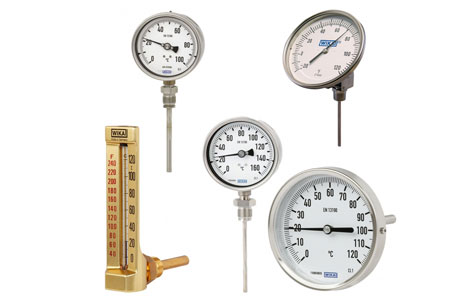What Is The Purpose Of A Temperature Gauge?
Key Takeaway
The purpose of a temperature gauge is to measure, monitor, and display temperature changes. It ensures systems operate safely and efficiently within predefined limits. By providing accurate readings, it prevents overheating, freezing, or other temperature-related damages.
Temperature gauges are essential in industries, vehicles, and homes. They safeguard equipment, enhance performance, and maintain comfort in various environments.
Monitoring Temperature in Systems
One of the primary purposes of a temperature gauge is to monitor temperature levels within systems. This monitoring is crucial for maintaining the proper functioning of machinery and equipment. Whether in a HVAC system, automotive engine, or a manufacturing process, temperature gauges help track temperature fluctuations in real-time.
Temperature is a key indicator of a system’s performance. If the temperature rises above or falls below optimal levels, it can signal potential issues, such as mechanical failure, energy inefficiency, or even dangerous malfunctions. Temperature gauges provide operators with immediate feedback, allowing them to act swiftly and avoid damage or breakdowns. For instance, in an HVAC system, maintaining the right temperature ensures the system’s components are not stressed, preventing premature wear.
Moreover, temperature gauges are vital in processes where precise temperature control is necessary, such as in chemical reactions or food processing. Without continuous monitoring, there could be serious consequences, such as product degradation or safety hazards. Hence, monitoring temperature is a fundamental aspect of ensuring the system’s overall health.

Protecting Equipment from Overheating
Overheating can be detrimental to any mechanical system, leading to costly repairs, downtime, and potential safety hazards. This is where temperature gauges play an essential protective role. By constantly monitoring the temperature of a system, temperature gauges provide early warnings when the system approaches dangerous temperature levels.
For example, in engines, turbines, or industrial machines, excessive heat can cause components to wear down or fail, resulting in system shutdowns. With a temperature gauge in place, operators can take timely action—such as turning off the system or activating cooling measures—to prevent overheating. This protective function is crucial for preventing expensive damage to equipment and extending its lifespan.
Temperature gauges also help avoid situations where overheating could lead to hazardous conditions, like fires or explosions. They ensure that systems remain within safe operating ranges, minimizing the risk of accidents and safeguarding both personnel and equipment. Properly monitoring and responding to temperature readings reduces downtime and repairs while enhancing operational safety.
Ensuring Safety in Operations
Safety is a top priority in every industry, and temperature gauges are indispensable in ensuring safe operations. Overheating or extreme temperature variations can lead to catastrophic failures, fires, or even health hazards, particularly in processes involving flammable materials or high-pressure systems. Temperature gauges are essential tools in maintaining safety standards.
In manufacturing plants, for example, certain machinery may operate at very high temperatures. If the temperature exceeds safe thresholds, it could result in equipment malfunction, posing risks to workers. Temperature gauges help monitor these levels, alerting operators when it’s time to adjust or shut down equipment to prevent accidents. This makes temperature gauges a critical component of safety protocols across industries.
Similarly, in laboratories or medical environments, temperature control is crucial. Medical equipment like autoclaves and refrigerators rely on accurate temperature readings to maintain sterilization or preserve sensitive substances. Temperature gauges, therefore, ensure both the safety of operators and the integrity of critical processes.
Enhancing Efficiency in Industrial Processes
Temperature gauges not only contribute to safety but also improve the overall efficiency of industrial processes. By accurately measuring temperature, these devices help optimize systems, reducing waste and energy consumption. For instance, in a manufacturing setting, controlling the temperature within a specific range ensures the consistency of products, improving production efficiency.
In HVAC systems, temperature gauges help maintain the desired climate settings by adjusting the heating or cooling based on real-time temperature readings. This prevents energy waste by ensuring the system doesn’t run unnecessarily when the desired temperature has been reached. Such energy efficiency helps reduce operational costs and environmental impact.
Similarly, in industries like food processing, precise temperature control is crucial for maintaining product quality while minimizing energy usage. By continuously monitoring and adjusting temperature, temperature gauges help industries maintain high standards of quality control and productivity while ensuring that resources are used effectively.
Role in Preventive Maintenance
Temperature gauges play a significant role in preventive maintenance by providing critical insights into the condition of equipment. Over time, equipment can develop wear and tear, which may not be immediately visible. However, temperature fluctuations often provide early warnings that something might be wrong. For example, a gradual increase in operating temperature could indicate issues such as friction or friction in moving parts, poor lubrication, or the need for cleaning.
By regularly monitoring temperature readings, companies can identify trends and potential problems early. This allows them to take corrective action before the issue becomes a serious problem, preventing costly breakdowns and unplanned downtime. Regular maintenance based on temperature gauge readings ensures that equipment operates at peak performance, reducing the likelihood of failures and extending its useful life.
For example, in a production line, temperature gauges can help detect malfunctioning machinery, ensuring that any needed repairs are made before the system fails entirely. Preventive maintenance enabled by temperature monitoring helps keep operations running smoothly and efficiently.
Conclusion
In conclusion, the purpose of a temperature gauge is to provide accurate and real-time monitoring of temperature levels in various systems and applications. These gauges play a critical role in ensuring the safety and efficiency of operations by alerting users to any deviations from desired temperature ranges. This allows for timely interventions and adjustments to maintain optimal conditions.
Temperature gauges are indispensable tools in industries such as automotive, manufacturing, and HVAC, where precise temperature control is crucial. Understanding their purpose and functionality helps users make informed decisions regarding their selection, installation, and maintenance. Ultimately, temperature gauges are vital for achieving accurate temperature monitoring and enhancing the performance and safety of numerous systems.
